IN FOCUS: No more need for speed? Singapore's illegal road racing scene fades even as concerns remain
After MP Ng Ling Ling asked in Parliament if the Traffic Police would consider stepping up enforcement in light of the fatal, high-speed crash in Tanjong Pagar, CNA investigates the scale of the local speedster scene.
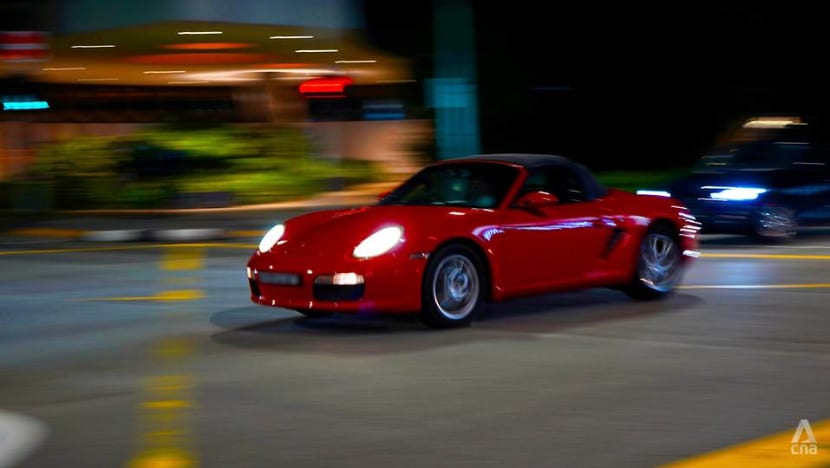
File photo of cars on the road in Singapore. (Photo: Calvin Oh)
SINGAPORE: The windows of the Mitsubishi Lancer Evolution 9 sports car were rolled down, letting in the acrid fumes of burning rubber and deafening groans of modified exhaust pipes.
The Evo roared through the relatively straight thoroughfare that is Stamford Road, well above the speed limit of 50km/h, recalled Adam (not his real name) of that evening in August 2014, when he sat in the front passenger seat.
The traffic lights and other vehicles still out and about after midnight meant this kind of speed had to be done in short bursts.
But the Evo was just one in a convoy of about 80 performance cars speeding through the streets that make up “Orchard Gudang (OG)”, a roughly 10km-long rectangular “rounding” route that runs from the Orchard shopping district in the west to the Marina Bay area in the east. It is also named after a race track in Pasir Gudang, Johor.
There were cars like a Nissan Silvia S14, Subaru WRX STI and Honda Civic Type R on the route, all with a “minimum requirement to be loud and flashy”, said Adam.
“Honestly, it was just to drive fast and hard for fun,” he told CNA. “There was no race or challenge.”
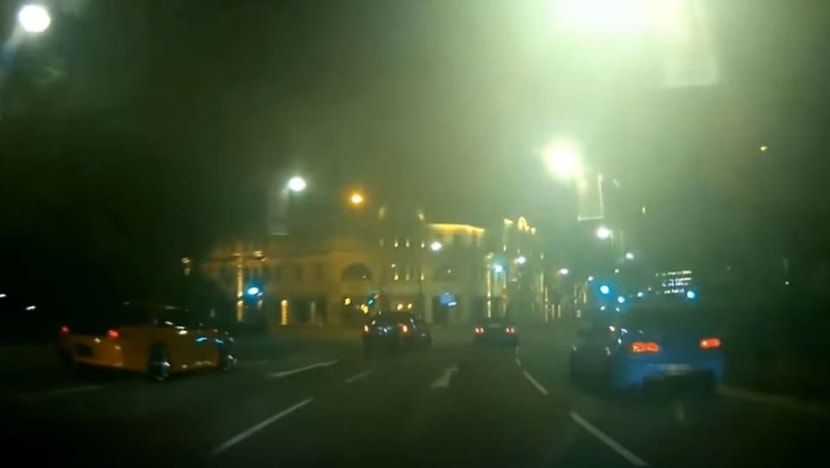
The occasion was the eve of National Day, also known as “0808” or “ba yue ba hao” as the drivers liked to call it, an annual informal event where drivers of such cars take to the streets to experience the joy and adrenaline rush of going fast in a group. There could be hundreds of cars speeding through Orchard Gudang on that day, Adam said.
As the Evo approached the tunnel under Fort Canning Hill, Adam established from a group chat that a police roadblock was up ahead after the tunnel. The drivers knew they had to avoid these roadblocks as some of their cars had been illegally modified.
Taking their cue, the cars ahead hit their brakes and made a sharp left onto Hill Street. The Evo that Adam was in, equipped with high-performance tires and brakes, managed to follow suit. But the Volkswagen Scirocco behind was not as lucky. The driver understeered and crashed into a traffic light, Adam said. He later heard that the driver escaped unscathed.
This kind of event, which has also happened on the eve of Chinese New Year, has been just one part of the speedster scene in Singapore, which has comprised racing and so-called "rounding" during the wee hours at different hotspots across the island, insiders familiar with the scene told CNA.
Their anecdotes about events that have taken place in the past are supported by photos and videos, as well as publicly available accounts and news reports on these activities.
READ: 4 cases of illegal speed trials from 2018 to 2020; 31 arrested: MHA
Rounding usually involved driving fast in a group along a pre-determined route via expressways. Performance cars would gather at a large car park like the one on Seah Im Road, before speeding to a destination at another end of the island, like Changi Airport or the East Coast Park car park located furthest east.
Racing typically involved a drag competition between two performance cars on a straight and deserted road, usually in Lim Chu Kang, Seletar or Tuas. Multiple cars would gather at these locations to watch the race, with spotters looking out for the Traffic Police (TP).
But the insiders said the scene has been fading in the past few years as a result of tougher enforcement by the police and the prevalence of dashboard cameras, with footage of reckless driving posted on online traffic vigilante groups attracting fierce backlash.
READ: 5 men killed in car crash at Tanjong Pagar, woman hospitalised with severe burn injuries
Still, a Feb 13 car crash that killed five people has raised questions in Parliament and elsewhere about the scene, after CCTV footage showed a BMW M4 speeding along a narrow street in Tanjong Pagar before losing control, slamming into a shophouse and bursting into flames.
While the circumstances of that crash have yet to be established, Member of Parliament (MP) Ng Ling Ling (PAP-Ang Mo Kio) asked in Parliament on Mar 4 if the TP would consider stepping up enforcement on roads prone to car racing, citing the Tanjong Pagar crash and increased feedback on such activities in her constituency.
Police data and court records show that the speedster scene still has some life in it.
From 2018 to 2020, 31 people were arrested in four cases of illegal speed trials. Then in April last year, a man was charged with breaching COVID-19 restrictions after organising an illegal car race involving more than 50 vehicles at Tuas South Avenue 4 the month before.
ROUNDING
Adam was involved in the scene from 2011 to about 2017, and drove both Japanese and European performance cars, including the Mitsubishi Evo 9 and Volkswagen Golf Mk5. These are fast cars that some owners like to modify to go even faster.
During those years, there were rounding sessions almost every weekend, said Adam, who would only say that he works in sales and is in his early 30s. Drivers would first meet at about 11pm at a large car park, like the ones at Seah Im, Kallang Leisure Park or Wheelock Place.
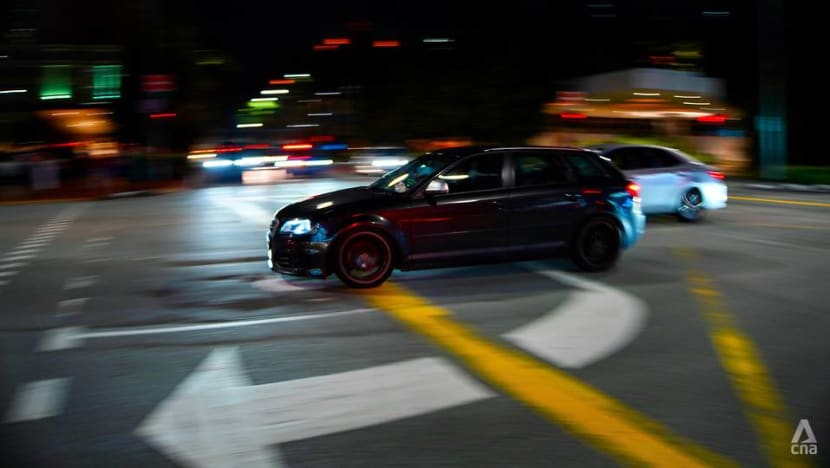
The drivers would then plan a route using expressways to get to different stops around Singapore, ranging from challenging roads like the "99 bends" at South Buona Vista Road, to places to eat like Changi Village.
The cars could go well beyond 100km/h while navigating these routes, in what Adam called “spirited driving”.
“Rounding is a mob mentality thing,” he explained. “When you have a group that goes fast, everybody goes fast.”
Motivations behind this, he said, include pride. “There is no monetary value in it,” he added. “It’s just a group of car enthusiasts, modifying the cars and testing them to the limits.”
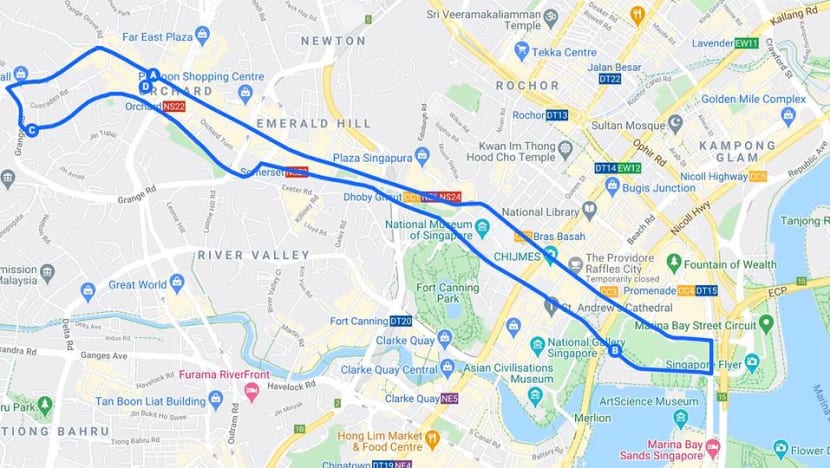
Fellow enthusiast James (not his real name), who drives a BMW 340i, said a rounding session always began with a small number of drivers meeting up for a meal and to hang out.
“Once five or six cars got together, we said: ‘Want to make some rounds?’” said the 25-year-old who works in the marine industry.
Drivers used walkie-talkies to communicate while rounding, and stopped at petrol kiosks to refuel and let their cars “cool down”, he said.
Some rounding sessions also involved drivers who “looked for people to play with” on the expressways, James said. This usually happened when the convoy encountered another sports car that might also be speeding.
“All would get excited and start to chase him,” he added. “Usually there’s no hidden motive; you just chased and got near him. Sometimes they smiled and you smiled back. Whoever reached their exit point would just exit. That’s their fun.”
RACING
In addition to high-speed rounds on the highways, there have been races at three locations, known as 40 tiang (Lim Chu Kang Road), 30 tiang (Tuas South Avenue 4) and 20 tiang (Seletar Link), Adam said.
Tiang is the Hokkien word for lamp post, denoting the supposed length of the drag track based on the distance between lamp posts.
A 2017 report by automobile magazine Torque said the remote, graveyard-lined 40 tiang was the home of “quite a significant Saturday-night racing subculture” throughout the 1990s. One YouTube video showed dozens of performance cars there on Aug 8, 2014.
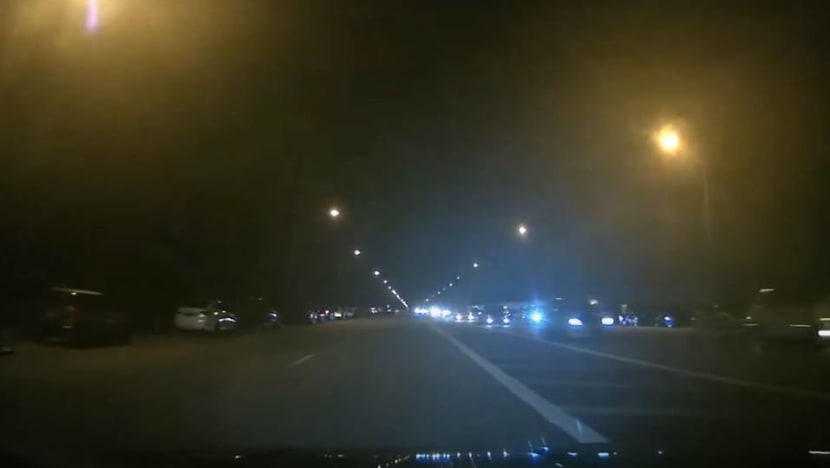
According to Adam, a race usually happened when word spread that a car had been modified to be powerful enough that its horsepower exceeded a certain level.
A car of average weight with more than 400 horsepower is considered fast. Some Japanese performance cars, called supercar “killers”, can be modified to have up to 1,000 horsepower.
“For example, a workshop says a Subaru WRX is 500 horsepower, but the driver of an Evo from another workshop says, ‘There’s no way this guy is 500 horsepower. I think I can take him,’” Adam said.
READ: Motorists in Tuas illegal car race investigated for not complying with safe distancing measures
The Evo driver would approach a trusted and neutral “match fixer” who knew the scene well enough to find the WRX driver through group chats or mutual friends, Adam said. Car workshops were not involved in organising races.
The WRX driver would be asked if he was free for a “friendly” on a Saturday night, and if all parties were agreeable, they would turn up at 40 tiang. There were a few big organisers, but there was no money involved, Adam said.
READ: COVID-19: Suspect behind illegal car race charged with organising event with more than 10 attendees
At the venue, cars would already be parked by the side to observe proceedings, and some drivers would be approached to take part in impromptu races. These were considered opening acts before the cars with the highest horsepower went head to head.
“You would see drivers smoking by the side, and you asked if they can race,” Adam added.
“They would say okay; they have already pumped petrol. When it’s their turn to go next, you whistled, they would run to the car, drive out and go to the starting point. It happened almost every weekend back then.”
POLICE RAMPING UP ENFORCEMENT
These races were clearly illegal, so spotters would be stationed at the front and rear of the track to look out for the police, Adam said.
When one of them gave a signal that the TP was nearby, everyone hit the brakes and drove normally, Adam said.
Back then, drivers believed they would not be in trouble if the police did not gather evidence of them speeding through measuring devices like a speed gun. When officers stopped the drivers to ask if they were racing, they would simply deny it, Adam said.
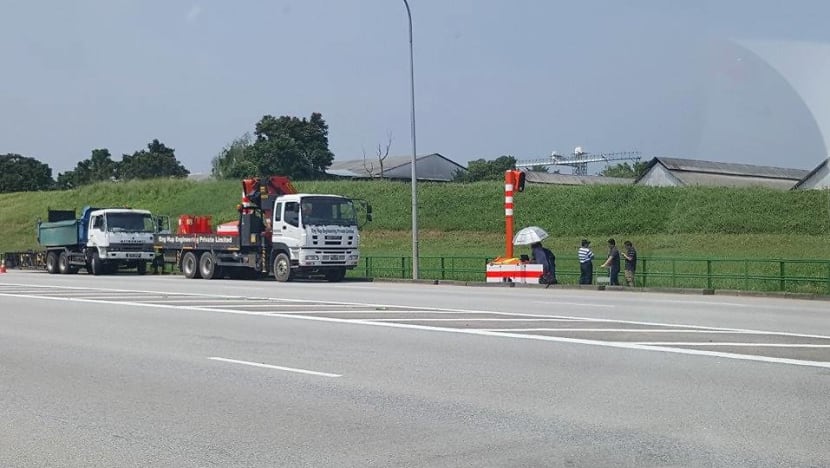
The TP set up a speed camera on the road, but the drivers were undeterred.
They got a BMW S 1000 RR sports motorbike with covered registration plates to zoom past the camera on the opposite side of the road to see if the camera could catch speeding vehicles travelling on the other side. There was no flash, and it was “open season” again, Adam said.
Despite that, the police continued to conduct operations based on intelligence, with some officers using unmarked cars to tail errant drivers.
During one race in 2016, an undercover officer driving a Volkswagen Golf GTI blocked off the road at 40 tiang before other police vehicles entered the scene, Adam said, providing a photo of the incident.
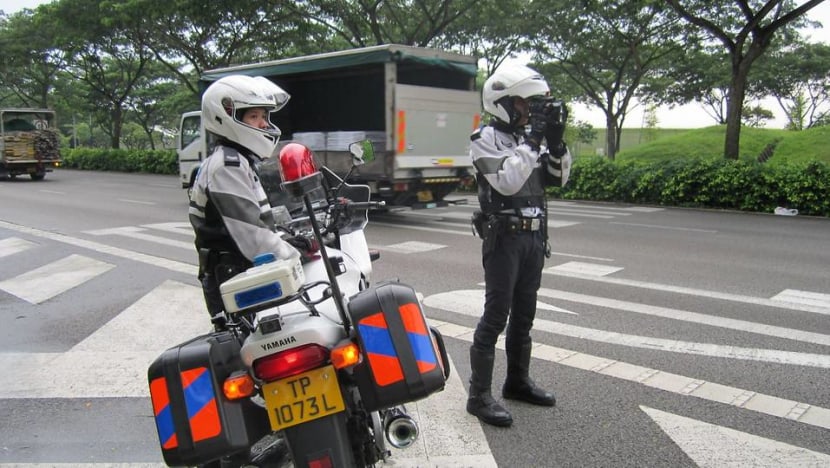
From then on, Adam said everything changed.
Police officers who stopped errant drivers would not ask them questions, but instead tell them that they were being investigated for illegal racing, Adam said, citing accounts by other drivers.
Some time later, the drivers would be summoned to give their statement, before being prosecuted in court.
Those found guilty of organising or participating in an unauthorised speed trial face up to six months’ jail, a fine of between S$1,000 and S$2,000, and a minimum driving ban of one year. Vehicles seized by the police may also be forfeited.
Adam believes the police switched tactics when investigating illegal racing, by using video evidence of racing manoeuvres and not focusing on the speed of the cars.
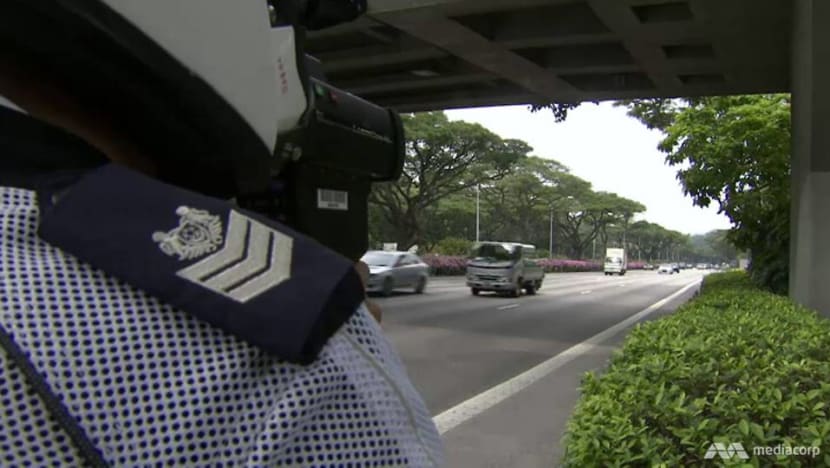
In response to queries from CNA, the police said it would not be able to reveal more details on this issue, citing reasons of “ops secrecy”.
On illegal racing, the police said it conducts regular enforcement operations at known hotspots, and assesses if it needs to mount additional operations when it gets public feedback on such activities.
“TP adopts a tough enforcement stance towards irresponsible driving behaviours. Motorists who are caught flouting traffic rules may be prosecuted in court,” it said. “If grievous hurt or death is caused, motorists may also face imprisonment and disqualification from driving.”
The last straw, Adam said, was when rumours spread that a person in the scene had ratted out a fellow driver to the police. The driver was eventually caught in a sting operation, Adam said.
“That happened and people grew out of it,” he said, effectively calling the racing scene “dead”. “You won’t see any more of these hardcore races.”
RISE OF DASHBOARD CAMS
While the racing scene faded, the rounding sessions continued strongly for another year or so, Adam said. That was until the drivers hit another roadblock: Dashboard cameras.
James said the rounding scene now is not like it was three years or so ago, as nobody “dares to do anything anymore”.
“Even when we go for a simple drive, we are very cautious,” he said. “If one guy speeds a bit, we tell him, ‘Don’t. Later someone post online.’”
Dashboard camera footage showing perceived traffic offences could also be uploaded in online vigilante groups and sent to the police, James said, highlighting one particular incident last year that “blew up”.
A 24-second video posted on the SG Road Vigilante Facebook page went viral after it contained dashcam footage of multiple cars speeding at the Kallang-Paya Lebar Expressway (KPE) on May 16.
About a week later, the police announced that it had arrested six men and two women aged between 20 and 42 years old for suspected dangerous driving and illegal racing along the KPE.
READ: 6 men, 2 women arrested for illegal racing along KPE during circuit breaker
Police said they had been alerted to an illegal race involving multiple vehicles along the KPE, and following investigations with the aid of CCTV footage, identified the suspects and arrested them between May 19 and 22.
“The public said they were racing but they were just going for rounds; some went faster, some slower,” James said. “Ever since these few incidents, a lot of people had no choice but to tone down.”
Indeed, last year's 0808 event seemed like a muted affair.
Automobile website Savage produced a video showing two Honda Civic Type Rs and a Suzuki Swift Sport with racing decals going around Orchard Gudang on that day, a far cry from the dozens of cars plying the route in previous years.
An accompanying article said: "They did the loop. They didn’t race."
Savage also uploaded a flashy video on its Facebook page showing 45 Nissan GT-R R35s rounding on the same day, with no signs any of them were speeding. The loud cars visited places like Changi Airport and Marina Bay.
James misses the days when enthusiasts would regularly drive as a convoy into Malaysia, where the roads are longer and the speed limits are higher.
"Locally, everything feels too limited," he added. "The more we are waiting for the borders to open. There is more freedom."
AN ONLINE SHIFT
Dashboard cams have also forced whatever remains of the scene to move online, Adam said, pointing to motorsports apps like QRacing and Dragy that measure a car's performance and speed over a specific distance.
The Dragy app, which its developer says uses high-speed GPS satellites to accurately measure a vehicle's performance within 1/100th of a second, features leaderboards across various categories for different countries.
The categories include how fast a car takes to get from 0 to 100km/h, or how fast it takes to complete a quarter mile, or 400m.
In the Singapore category, the driver with the fastest quarter mile is a user called AndyTuning, who drove an Audi TTRS and completed the distance in 9.96s. The app also indicates that the user almost reached a top speed of 240km/h during the run.

The app, however, does not indicate where this trial took place.
"Some users test their cars on drag strips overseas," Adam said. "It's a global app, so when you post it, people will take note."
These apps have allowed drivers in Singapore to still "document and authenticate" how their cars perform against others safely, Adam said, especially as the "general sense" in the scene is that "everybody is scared because of dashboard cams".
"A lot of people started posting reckless driving videos online, and you can get caught, called in for a police interview," he added. "It creates this kind of shit, so people didn’t want it."
When asked about enforcement against rounding sessions and the potential use of videos posted on traffic vigilante groups, the police said it conducts regular enforcement operations to “deter and detect errant road behaviours”.
“Members of the public may submit information on traffic violations to TP via the ‘feedback on road users’ portal so that TP can look into it,” the police said.
TRAFFIC VIGILANTE GROUP RESPONDS
Facebook traffic groups like SG Road Vigilante, ROADS.sg and Beh Chia Lor have grown in popularity in recent years, featuring videos of accidents and misdemeanours involving all types of road users.
The SG Road Vigilante Group has more than 130,000 followers, with a description that states: “You might think there is no TP around and you can drive recklessly, but don't forget, ‘THERE ARE MANY 'EYES' AROUND YOU!’”
When asked if the group’s aim was to help law enforcement by providing extra eyes on the road, an administrator told CNA: “Our main aim is to make our roads safe again.”
“Your family members, regardless of young or elderly, (should be able to) cross the road when the lights are green without worrying about getting knocked down,” the admin added, declining to be identified and citing other moderators who have been harassed.
“The road is used to allow people to get from point A to point B, not for racing, speed trials or whatever.”
With speedsters getting deterred by these types of platforms and the backlash they might bring, the admin was then asked if the group had achieved its aim.
“We have no aim,” the admin replied, before showing a picture of a Lexus car sporting decals that directed profanities towards the TP and SG Road Vigilante group. “This picture is worth a thousand words.”
“Everyone is welcome to drive in whatever manner they like,” the admin continued. “This platform simply allows motorist to share road traffic offences. Of course, reckless driving included.”
The admin was also asked about the recent video showing cars speeding on the KPE, which led to enforcement action against those involved.
“If the police have the equipment and resources to remotely monitor the drivers and the vehicles, they should be doing this 24/7,” the admin responded. “Not till someone shares a video and waits till the video goes viral then responds.”
MP CALLS FOR MORE MEASURES
Ang Mo Kio MP Ms Ng said she has been engaging the Ministry of Home Affairs and TP to step up surveillance and enforcement in her constituency, in light of increased feedback on illegal racing there.
Ms Ng said the number of complaints has gone up since the Tanjong Pagar crash in February, with residents living in the Seletar Camp neighbourhood giving “collective feedback” on getting authorities to investigate and take action.
“The illegal races that residents have shared with me happen usually in the late hours of the nights, at times from 11pm to 5am,” added Ms Ng, who is in charge of the Jalan Kayu ward.
“The roads that I get more feedback from are around Seletar Camp and Seletar Aerospace Park, which seem more prone to illegal car racing.”
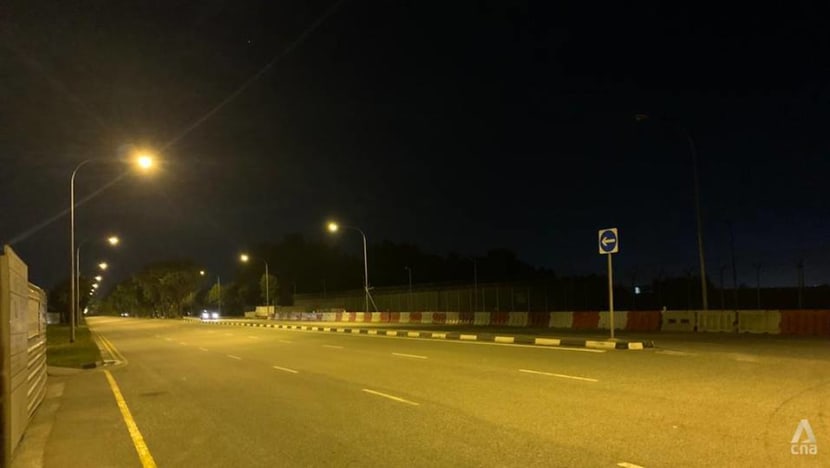
When CNA visited the area in the early hours of Mar 13, and staked out the popular racing route on Seletar Link, it did not see any instances of performance cars rounding or racing.
Still, close to 2am, CNA spotted an unusual sight for that time of the night: Two pairs of Ferrari and McLaren supercars moving together in the Seletar Aerospace Park area. The drivers observed the speed limit.
Residents in the area have heard loud noises from cars and motorcycles late at night, Ms Ng said, adding that they have seen sports cars revving their engines and going above the speed limit of 60km/h.
“I am concerned about the safety of road users, especially my residents who use the above-mentioned roads to travel to and from their work and home,” Ms Ng added.
“There are a number of families with young children living in houses near the Seletar Camp, and I do want to ensure safe roads in their surroundings.
“Furthermore, given that most people are working from home, their much-needed rest can been disrupted by the noises caused by these illegal car racing activities.”
CONCERNS ABOUT ILLEGAL MODIFICATIONS
MP Lim Biow Chuan (PAP-Mountbatten) also brought up the issue of performance car noise in Parliament on Mar 1, highlighting that residents in his constituency have complained that these cars have been illegally modified to remove their exhaust mufflers and hence are “much noisier”.
“There are also comments that the car in the Tanjong Pagar accident was illegally modified and hence became combustible,” the MP said, referring to speculation that the BMW M4 had been installed with a methanol injection tank.
According to the One Motoring website, the Land Transport Authority (LTA) does not allow the removal of catalytic converters and mufflers, as this will “adversely affect” the vehicle’s exhaust emission characteristics.
Nitrous injection devices are also banned, while the addition of superchargers or turbochargers will require LTA’s approval.
READ: LTA issued about 610 notices of offences a month to owners of illegally modified vehicles: Amy Khor
The owner of Eurosports Performance Tuning, one of more than a dozen workshops in Singapore catering to the modification of performance cars, believes that authorities could afford to be more lenient with its regulations on exhaust and turbo modifications.
Mr Calvin Wan pointed to how some countries in the west allow these types of modifications through a paid permit system. Drivers would have to declare how much more horsepower they were going to get, and have their vehicles tested at an official inspection centre.
“It could give more revenue for (the Government) ... but if there aren’t so many issues (of illegal rounding or racing), I don’t think they will lock down,” he conceded.
Mr Wan said drivers modify their performance cars for a variety of reasons, including to increase fuel efficiency or to get more power for ease of overtaking.
“There are customers who want the adrenaline, G-force and so on,” he added. “The factories undertune the car; there’s so much more potential for certain cars and models.”
Nevertheless, Mr Wan reminds customers who want their cars to be fast to always handle them properly and “stop in time”.
“At the same time, remember there’s no finishing line on the road,” he stated. “If they really want to push their car, show their skills, do it in a safer environment like Sepang (race track near Kuala Lumpur), where everybody is aware of what they are getting into.”
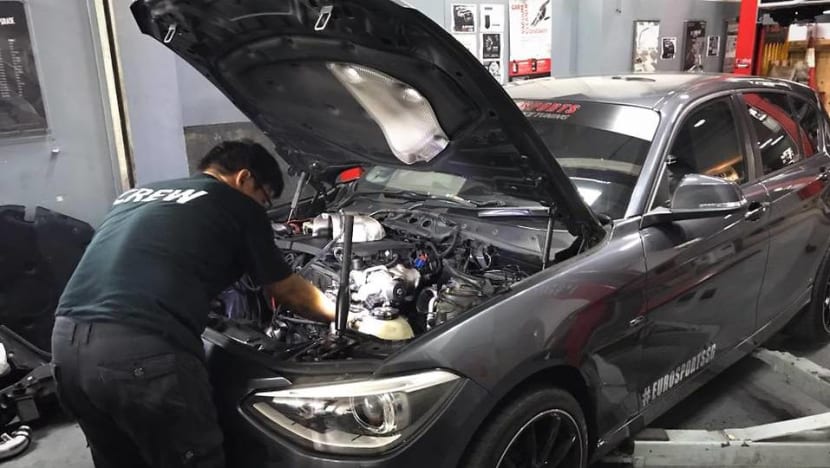
Mr Wan said he has distanced himself from the local speedster scene “for many years” as the “spirit is lost”.
“Everyone used to look out for one another, but for the past few years there are some drivers who totally neglect safety and start to have a lot of accidents, so I no longer wish to be a part of it,” he said.
Furthermore, Mr Wan said serious accidents involving modified cars have caused a backlash towards the industry.
“When things like that happen, our industry just keeps quiet,” he added. “People will think modified cars – ah bengs or irresponsible young reckless drivers. But that’s not very true. We have quite a lot of customers who are quite responsible.”
WHAT MORE CAN TRAFFIC POLICE DO?
Referring to the serious accident in Tanjong Pagar, MP Joan Pereira (PAP-Tanjong Pagar) asked in Parliament on Mar 1 if the TP had done anything about feedback on speeding in that area.
While Minister of State for Home Affairs Muhammad Faishal Ibrahim said the number of complaints of speeding on Tanjong Pagar Road was not high, he said the TP conducts frequent patrols and roadblocks in the vicinity to deter and detect drink driving and speeding.
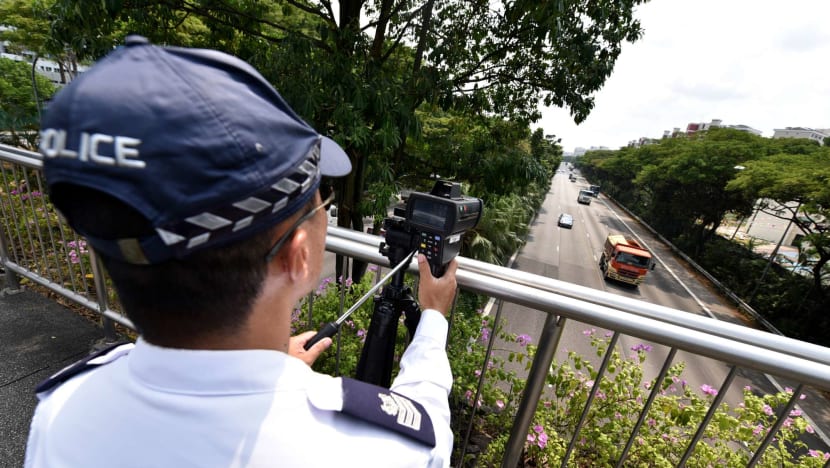
Back in the Jalan Kayu ward, Ms Ng said she hopes that road calming measures like humps or speed strips will be introduced to make the roads safer, adding that her residents have also suggested installing more speed cameras.
The police told CNA that it leverages technology like deploying enforcement cameras with warning signs at “strategic locations” islandwide, to remind motorists to slow down and to deter and detect errant motorists.
“TP also conducts patrols and makes use of mobile speed laser cameras to detect speeding offences,” it added.
READ: BMW driver who went up to 177kmh in illegal race gets jail, fine
On the installation of speed cameras, Associate Professor Faishal had also told Parliament on Mar 1 that the TP will consider locations prone to accidents and where speeding takes place often.
“This is regardless whether the speeding incidents and accidents tend to occur at night or in the daytime,” he said. “In addition, TP will assess if the terrain is suitable for the camera to be installed and effectively detect violations.”
The TP also works closely with LTA on the installation of speed regulating measures, he added, including road humps and speed regulating strips “where necessary and feasible”.
GROWING THE LEGAL SPEEDSTER SCENE
On the part of drivers, the workshop owner Mr Wan encouraged them to test their cars in a controlled environment, but said that the nearest legal track in Malaysia could not be that convenient to get to.
He also expressed disappointment that a plan to build a permanent race track in Changi had been scrapped.
The Changi Motorsports Hub project stalled in 2011 when a Japanese-led consortium that won the bid ran out of money, The Straits Times reported.
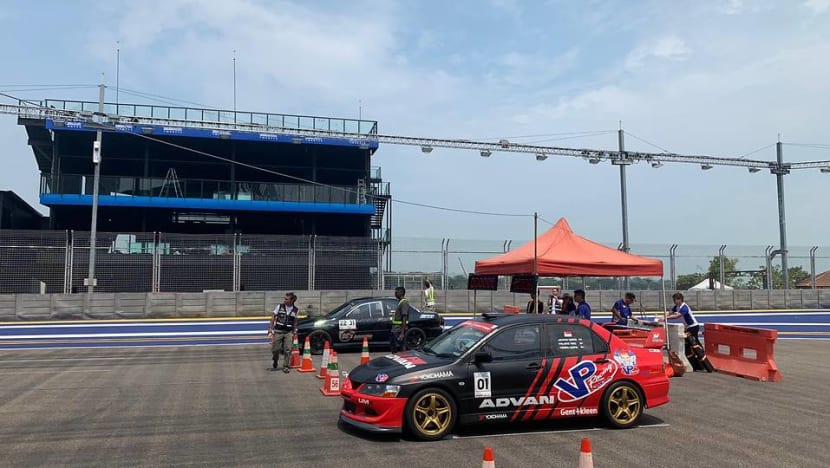
Efforts to revive it have since proved futile, and Motor Sports Singapore acting president Winson Ow told CNA that Singapore is unlikely to have its own permanent, full-sized circuit in the next five years, noting the financial strains businesses face due to COVID-19.
Mr Ow said he was heavily involved in the planning for the Changi Motorsports Hub project, but the financial issues then left stakeholders with “no choice”.
“To get investors to throw in cash for that size of motorsports venue now, I don’t think it’s financially viable,” he said.
When Mr Ow was asked if he felt the Government should step up efforts to grow the local motorsports scene, he said it was not a “good time” to be “pushing hard”, citing the difficulty of making profits from such a venue in the current climate.
Nevertheless, Mr Ow said the association is working with the authorities and private stakeholders to find smaller, unutilised plots of land or open spaces that could be used as mini motorsports venues.
He highlighted the merits of holding smaller events at these venues, pointing out that they could get younger people interested in the scene and help related industries here flourish.
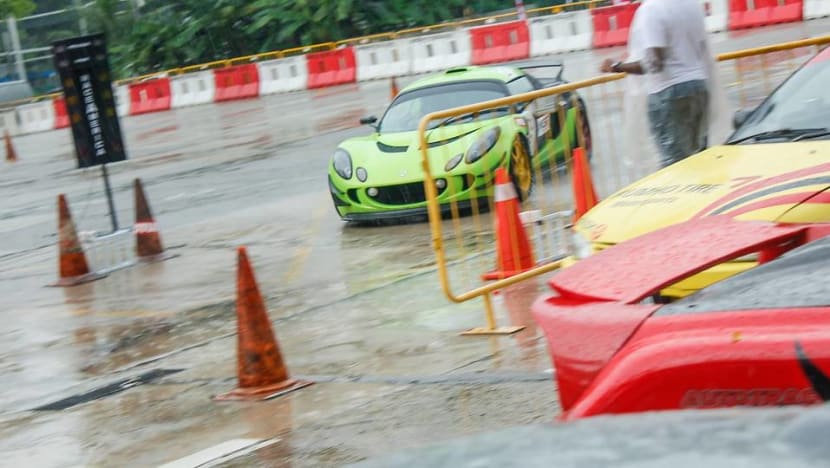
Mr Ow said there is huge potential for such a scene in Singapore due to the numerous car clubs here, noting that 60 per cent of bookings at Malaysia’s Sepang circuit were made by Singaporeans.
“We can sustain (this model) as we create another reason for people to come to Singapore,” he said, pointing out that international racers could compete in Singapore and bring along family members as tourists who are willing to spend.
When the Government realises the benefits of a thriving motorsports scene, Mr Ow feels “someone for sure will come in to support this”. “I think one day they will need it because it grows very fast,” he added.
Despite that, Mr Ow is not fully convinced that a permanent circuit in Singapore will deter illegal rounding and racing activities.
“It will help, but I don't say 100 per cent it will stop, because these are totally different groups of people,” he said, comparing serious enthusiasts to the average performance car driver.
“Some people want to wayang a bit, want to show off. Sometimes, they just got their new toy and want to show off. That type of people are very hard to control.”
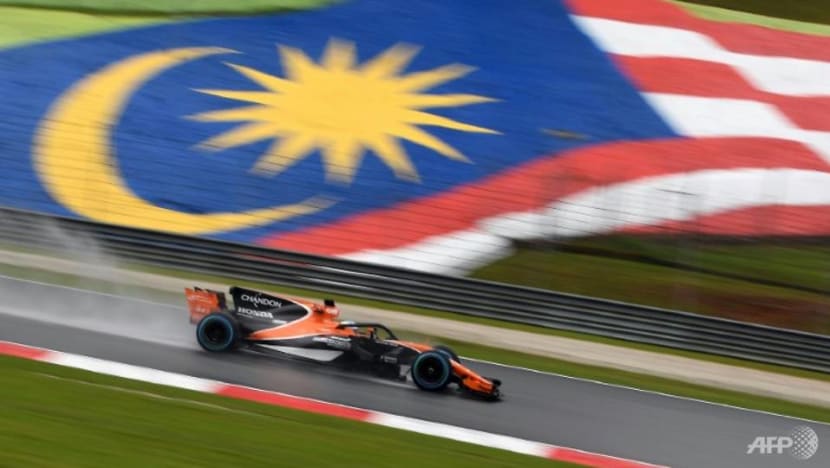
Mr Ow urged these drivers to drive up to Malaysia to experiment with their cars in a proper circuit, as they are able to go beyond the usual limits without the potentially serious consequences that might come with something like skidding.
Mr Wan pointed out that in a circuit, cars that enter a corner too fast and lose control will only hit gravel, as opposed to the "unforgivable" bends on public roads.
“If you got a proper venue, the damage will only be to the car,” Mr Ow stated.
“It won’t kill you.”














